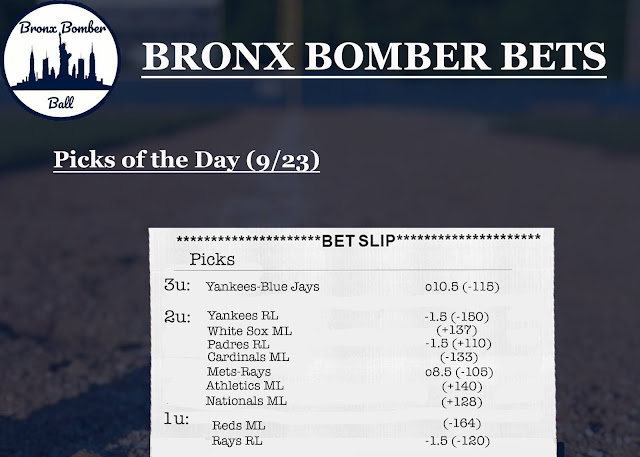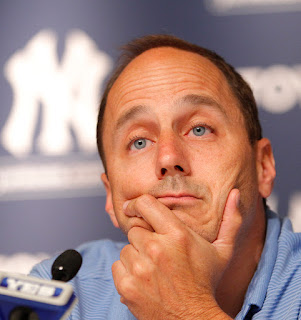The Yankees and the fans need to be patient with Aaron Judge
Built like an NFL tight end, Aaron Judge has been a prospect with lofty expectations hanging over his head as he has come up through the Yankees’ minor league system. Listed at 6’7” and weighing 275 pounds, Yankees fans have been hearing about Judge’s towering home runs as a minor leaguer, and seeing him rise through the system so quickly has been rewarding. But after getting the call to the big leagues in 2016, Judge looked lost at the plate, striking out at an alarming rate, and failing to hit above the Mendoza line, albeit in just 27 games and 84 at-bats. Through his struggles and growing pains, the Yankees and their fans need to be patient with him as he continues developing into the middle of the lineup slugger that he is destined to be.
 |
| Photo Credit: AP |
Judge struggling mightily following his call-up to the Bronx in August is not something that has been unheard of in his young career. In Judge’s first season as a pro, he built his status as a top prospect by mashing minor league pitching, hitting to a slash line of .308/.419/.486 with 17 homers and 78 RBIs. Despite his success, strikeouts were alarming for Judge as he did go down on strikes 131 times in 131. Stills, Judge was able to jump from single-A Charleston at the beginning of 2014, to high-A Tampa midseason, to double-A Trenton to start 2015.
Once again, Judge got off to a hot start in 63 games in Trenton, hitting .284 with 12 home runs before being called up to triple-A around the middle of the 2015 season. However, things were not free sailing to the big leagues from there for the Yankees top prospect at that time. Judge endured the worst and longest slump of his pro career in Scranton hitting to an abysmal slash line of .224/.308/.373, with only eight bombs, 28 runs batted in and a dreadful .680 OPS. During the course of the 2015 season, Judge struck out 144 times in 124 games, including a strikeout percentage of 26.67%.
Heading into 2016, Judge would not be denied. Following his struggles, many prospect lists were topped by still rising stud Jorge Mateo, but Judge managed to rebound in a big way, forcing his presence onto the big league roster in August. Despite just half a season of experience at the triple-A level, Judge hit to a much improved .270/.366/.489 line with 19 home runs, 65 RBIs and an .854 OPS in 93 games. Judge also dropped his strikeout percentage a few points to 23.9%, while seeing his batting average improve by 46 points and his on base percentage increase by 58 points. After Alex Rodriguez played his final game, the Yankees would call Judge up to make his major league debut, the very next day.
Becoming just the third player in Yankees history to wear number 99, Judge stepped to the plate following a home run by Tyler Austin that just snuck into the short porch in his first at-bat. Unbelievably, Judge followed that up with a towering home run of his own into Monument Park, as Judge and Austin became the first pair of teammates to hit back-to-back home runs in their first career at bats - a feat that is unlikely to ever be replicated.
Becoming just the third player in Yankees history to wear number 99, Judge stepped to the plate following a home run by Tyler Austin that just snuck into the short porch in his first at-bat. Unbelievably, Judge followed that up with a towering home run of his own into Monument Park, as Judge and Austin became the first pair of teammates to hit back-to-back home runs in their first career at bats - a feat that is unlikely to ever be replicated.
Making history in his very first game only increased the expectations, hopes, and dreams of the Yankee faithful in year one of the youth movement. Unfortunately, Judge could not sustain the offensive outburst he had in his first career game, and he struggled to make contact at the plate, going down on strikes in an eye-gouging 44.2% of plate appearances. Additionally, Judge sported a dreadful .179/.263/.345 line with a .608 OPS as he hit just four home runs, and two doubles.
However, Judge was not supposed to burst on the scene and take the league by storm. As a matter of fact, no rookie is. Gary Sanchez was an absolutely anomaly. His .299/.376/.657 line with a 1.032 OPS and 20 home runs in 53 games was something that the game of baseball had never seen by a rookie, and it only increased the expectations Judge had on his shoulders, which had never been higher.
Mike Trout endured some serious struggles when he was called up to the big leagues in 2012. Trout hit to a .220/.281/.390 slash line with a .672 OPS, with five homers and six doubles in 40 games (123 at-bats). And Trout is the furthest thing from a bust. He quickly adjusted to the big leagues in becoming the best player in the major leagues arguably just one year later. Aaron Judge is by no means Mike Trout, but the point remains: prospects typically struggle initially before reaching their peak. I'm sure fans were tough on Trout too, but let's cut the kids a break every once and a while.
Yankees fans and the media are notorious for being incredibly tough on players, and they are especially tough on newcomers whether they be recently signed free agents, trade acquisitions, or prospects. Despite the heavy criticism Judge received from the masses in 2016 before his season-ending injury, Hal Steinbrenner, Brian Cashman, and Joe Girardi have all insisted that Judge will be the everyday right fielder in 2017.
Judge should enter next season without any pressure. He will be hitting in the bottom half of the lineup, and he is essentially guaranteed a spot on the opening day roster. Unless things take a dreadful turn for the worst, Girardi will continue penciling in Judge's name in the lineup. And the encouraging part is, Judge has a good approach to hitting. He is able to get his foot down, and he has a compact swing for a guy of his stature. He just has to key in on one pitch.
The issue with Judge is that he has a tough time hitting a curveball, and that's always been his problem. But as previously mentioned, he's seemed to adjust well at the next level within a reasonable time. Am I expecting Judge to win multiple player of the month awards and be an MLB All-Star like he was at the triple-A level last season? Not necessarily, but he is a solid candidate to have a bounce-back season in a sense that he will be among the top rookies in the league, and may be in the running for the rookie of the year award. But if he doesn't, next season will continue to benefit Judge is his development into a cornerstone piece of the Yankees youth movement.
Fans should be reasonable and understand that for every 400+ foot bomb that Judge puts in the seats, he's also going to strike out three, four, or even five times. Strikeouts are a part of his game. Hitting for a high average is not yet part of his game, but his ridiculous power makes up for it. Judge has the tools to play at the big league level for a long time, and we just have to give him the time and patience to develop into that .275 and 35 home run type of player hitting the the heart of the order.
Article by: Chad Raines
Follow @chad_rain
Follow @BronxBomberBlog
Yankees fans and the media are notorious for being incredibly tough on players, and they are especially tough on newcomers whether they be recently signed free agents, trade acquisitions, or prospects. Despite the heavy criticism Judge received from the masses in 2016 before his season-ending injury, Hal Steinbrenner, Brian Cashman, and Joe Girardi have all insisted that Judge will be the everyday right fielder in 2017.
Judge should enter next season without any pressure. He will be hitting in the bottom half of the lineup, and he is essentially guaranteed a spot on the opening day roster. Unless things take a dreadful turn for the worst, Girardi will continue penciling in Judge's name in the lineup. And the encouraging part is, Judge has a good approach to hitting. He is able to get his foot down, and he has a compact swing for a guy of his stature. He just has to key in on one pitch.
 |
| Photo Credit: Kathy Willens | AP |
Fans should be reasonable and understand that for every 400+ foot bomb that Judge puts in the seats, he's also going to strike out three, four, or even five times. Strikeouts are a part of his game. Hitting for a high average is not yet part of his game, but his ridiculous power makes up for it. Judge has the tools to play at the big league level for a long time, and we just have to give him the time and patience to develop into that .275 and 35 home run type of player hitting the the heart of the order.
Article by: Chad Raines
Follow @chad_rain



Comments
Post a Comment